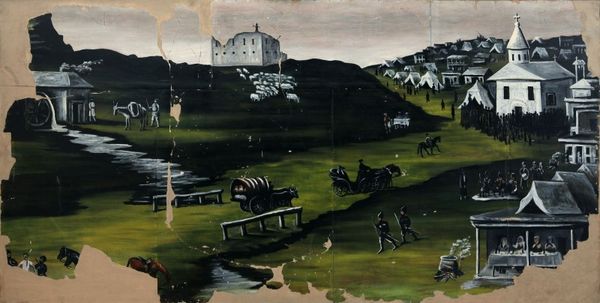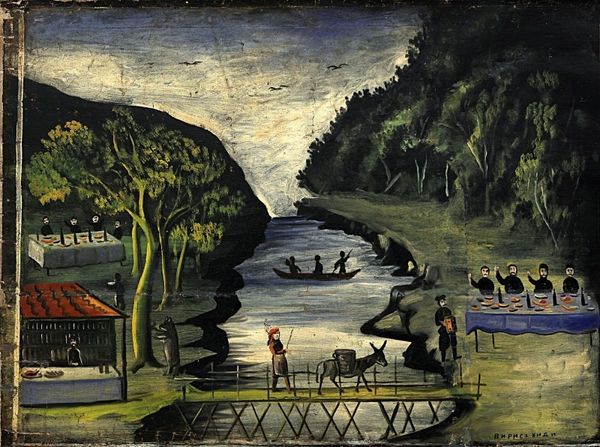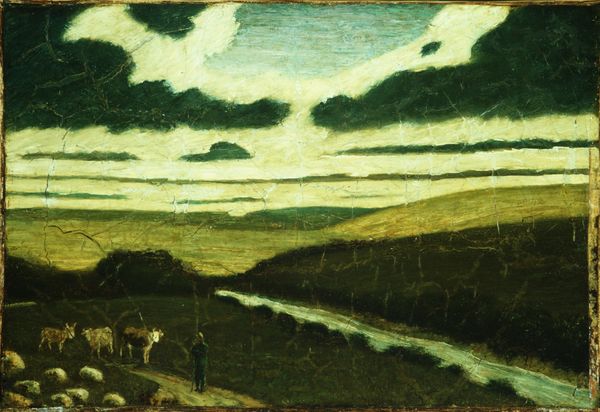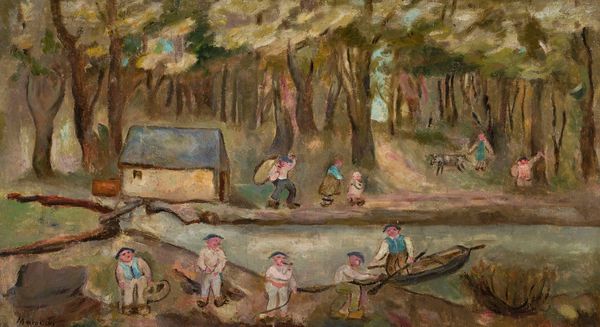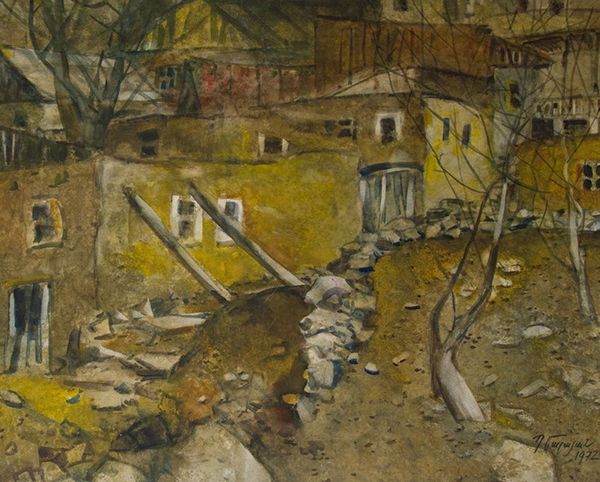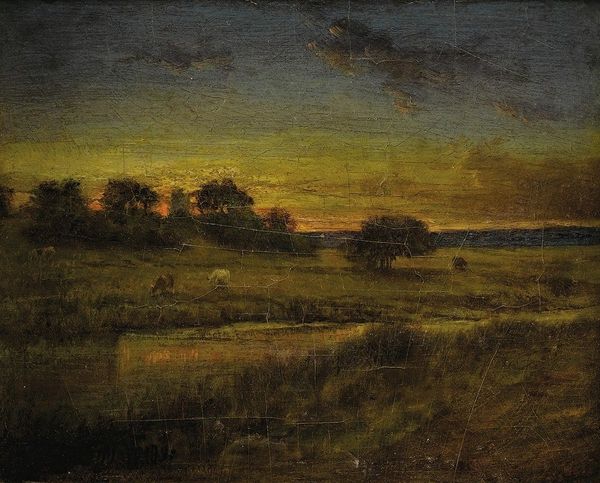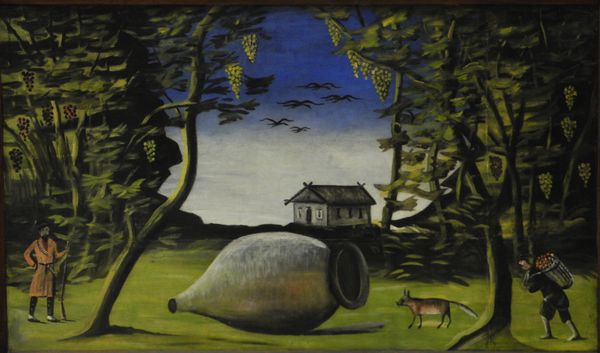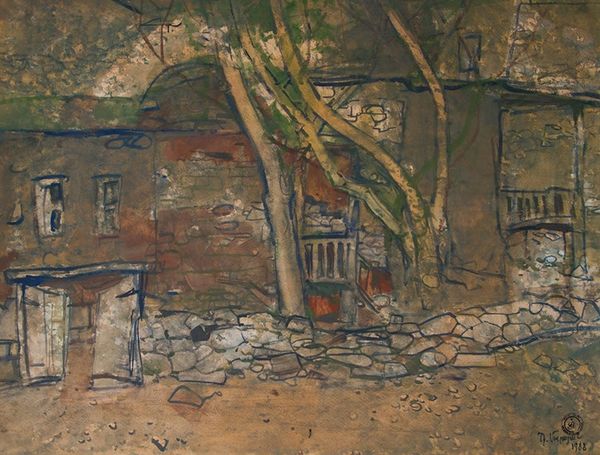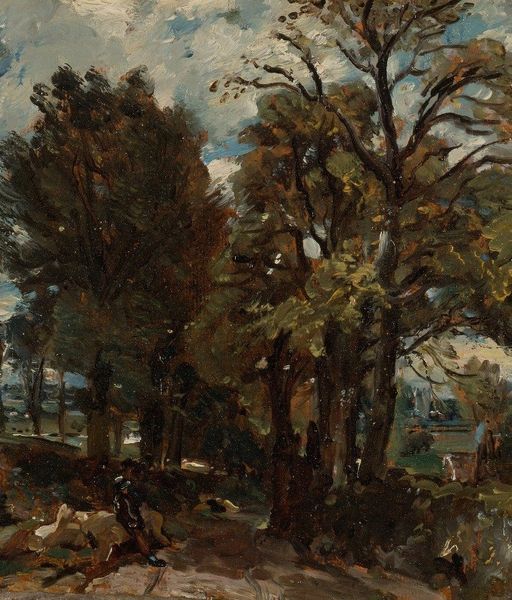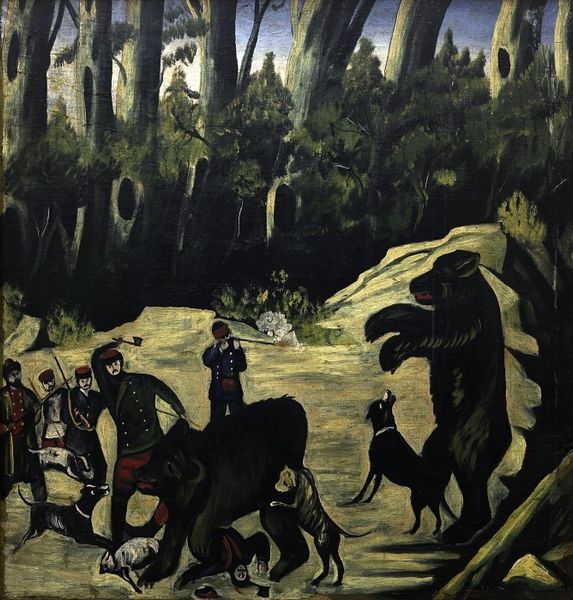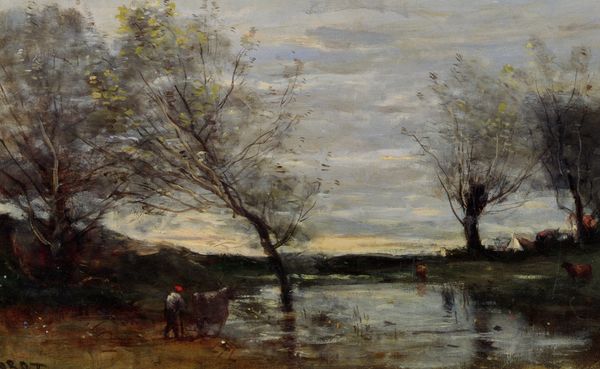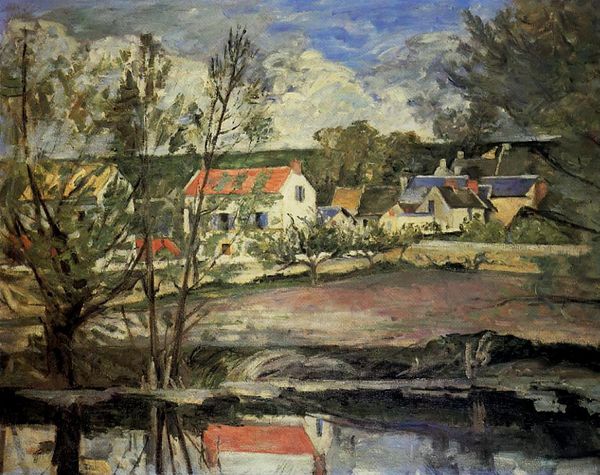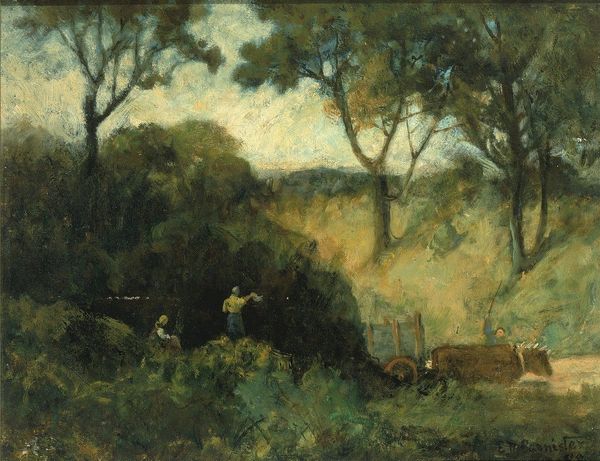
Shiraki (part of Tapestry in six paintings)
0:00
0:00
nikopirosmani
Art Museum of Georgia (AMG), Tbilisi, Georgia
painting, oil-paint
#
painting
#
oil-paint
#
landscape
#
genre-painting
#
mixed media
Copyright: Public domain
Curator: This is "Shiraki", one piece from the series “Tapestry in six paintings”, by the Georgian artist Niko Pirosmani. Editor: It’s an enchanting landscape, though a little melancholy with its muted tones. The overall composition feels dreamlike, the figures somewhat frozen in time. Curator: Pirosmani worked primarily in oil paint on oilcloth, a common material for commercial signs, which gives the paintings a distinctive texture and absorbs the pigment in interesting ways. Considering that he was a self-taught artist producing these in the early 20th century, it's reasonable to argue that the art-making production methods in this instance align with the culture and needs of the rising petite bourgeoisie, for whom these would have functioned as decor, while simultaneously acting as the artist's daily bread. Editor: True, and looking closer, one can appreciate how the artist manipulates spatial perspective here; look at the way Pirosmani uses colour and size to indicate depth, particularly with the shepherd and sheep, or those birds in the sky, though perhaps it might seem crude to those used to a high degree of naturalism. Curator: There’s an interesting tension between depicting rural Georgia and creating an aspirational view of leisure for the rising urban merchant class; notice the figures in the painting: villagers and travelers taking repose near the water. The focus isn’t the difficulty of manual labour but rather social harmony within an ideal landscape. Editor: The way the river winds its way, bisecting the forest and populated meadow into segments gives this tableau a beautiful balance—notice also how the colour palette, dominated by greens, blues, and blacks, conveys a sense of nature’s subdued magnificence in gentle agreement with the convivial repast taking place, the human component in that pastoral scene. Curator: Exactly! Pirosmani uses that balance to communicate an idealised version of contemporary Georgia, where commerce and rural life find a space to come together in this decorative oilcloth panorama. Editor: That certainly gives new weight to Pirosmani’s artistic endeavour, providing a clear structural basis and a concrete way of decoding "Shiraki’s" visual language, helping us connect personally to the art displayed here at the Art Museum of Georgia. Curator: Indeed. This approach offers us the opportunity to interpret this enchanting, and deceivingly simple, work from a totally new vantage.
Comments
No comments
Be the first to comment and join the conversation on the ultimate creative platform.
